-
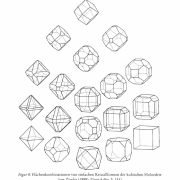 Elemente der Naturwissenschaft71,1999ELEMENTE DER NATURWISSENSCHAFT 71 2/1999 Geometrische Kristallmorphologie auf projektiver Grundlage Zur Komplementarität von Morphologie und Strukturtbeorie Renatus Ziegler Summary Crystals fascinate us with their clear shapes and with their sensual attributes such as color, luster, hardness, etc. and by their variety of substances... read more
Elemente der Naturwissenschaft71,1999ELEMENTE DER NATURWISSENSCHAFT 71 2/1999 Geometrische Kristallmorphologie auf projektiver Grundlage Zur Komplementarität von Morphologie und Strukturtbeorie Renatus Ziegler Summary Crystals fascinate us with their clear shapes and with their sensual attributes such as color, luster, hardness, etc. and by their variety of substances... read more -
 Elemente der Naturwissenschaft68,1998ELEMENTE DER NATURWISSENSCHAFT 68 1/1998 A Refined Biocrystallization Method applied in a Pictomorphological Investigation of a Polymer Jens-Otto Andersen, Jens Laursen and Per Kelster Summary An experimentally refined biocrystallization method is presented. The method is applicable for investigating the pictomorphological properties... read more
Elemente der Naturwissenschaft68,1998ELEMENTE DER NATURWISSENSCHAFT 68 1/1998 A Refined Biocrystallization Method applied in a Pictomorphological Investigation of a Polymer Jens-Otto Andersen, Jens Laursen and Per Kelster Summary An experimentally refined biocrystallization method is presented. The method is applicable for investigating the pictomorphological properties... read more -
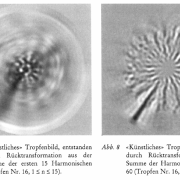 Elemente der Naturwissenschaft68,1998ELEMENTE DER NATURWISSENSCHAFT 68 1/1998 Zur analytischen Bearbeitung der Tropfenbilder Natasha Bodrova, Nikita Iroshnikov, Georg Unger Summary In this article we discuss the first approach to analysing so called drop pictures using computer methods. A transformation of the pictures on Fourier-Bessel spectra was implemented with the... read more
Elemente der Naturwissenschaft68,1998ELEMENTE DER NATURWISSENSCHAFT 68 1/1998 Zur analytischen Bearbeitung der Tropfenbilder Natasha Bodrova, Nikita Iroshnikov, Georg Unger Summary In this article we discuss the first approach to analysing so called drop pictures using computer methods. A transformation of the pictures on Fourier-Bessel spectra was implemented with the... read more -
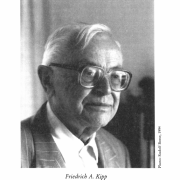 Elemente der Naturwissenschaft68,1998ELEMENTE DER NATURWISSENSCHAFT 68 1/1998 Über die Zusammenordnung der Weltenzweiheit in der Physis Zum Erkenntnisanliegen von Friedrich A. Kipp 17. März 1908 - 30. Juni 1997 Stephan Stockmar Summary Friedrich Kipp’s involvement with cognition is characterised, based on his publications as well as my notes on his lectures and our... read more
Elemente der Naturwissenschaft68,1998ELEMENTE DER NATURWISSENSCHAFT 68 1/1998 Über die Zusammenordnung der Weltenzweiheit in der Physis Zum Erkenntnisanliegen von Friedrich A. Kipp 17. März 1908 - 30. Juni 1997 Stephan Stockmar Summary Friedrich Kipp’s involvement with cognition is characterised, based on his publications as well as my notes on his lectures and our... read more -
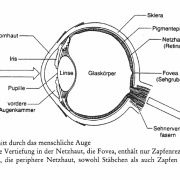 Elemente der Naturwissenschaft68,1998ELEMENTE DER NATURWISSENSCHAFT 68 1/1998 Von der menschlichen Farbwahrnehmung zur Intentionalität Georg Iliev Summary Our visual perception of an object represents several of its features which we can focus our attention upon. Since seeing is not a passive, but on the contrary an active process, two basic questions arise: What does it... read more
Elemente der Naturwissenschaft68,1998ELEMENTE DER NATURWISSENSCHAFT 68 1/1998 Von der menschlichen Farbwahrnehmung zur Intentionalität Georg Iliev Summary Our visual perception of an object represents several of its features which we can focus our attention upon. Since seeing is not a passive, but on the contrary an active process, two basic questions arise: What does it... read more -
Elemente der Naturwissenschaft68,1998ELEMENTE DER NATURWISSENSCHAFT 68 1/1998 Beitrag zur Untersuchung der Postulate der Speziellen Relativitätstheorie von Albert Einstein Mario Matthijsen Summary An immanent—critical methodology for scientifically testing existing theories is presented and applied to the postulates of Albert Einstein ’s Special Theory of Relativity as... read more
-
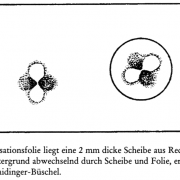 Elemente der Naturwissenschaft69,1998Naturwissenschaftliche Sekt ELEMENTE DER NATURWISSENSCHAFT 69 2/1998 Das Haidinger—Büschel als Urphänomen der Polarisationserscheinungen Albert Pröbstl Summary Since Wilhelm Haidinger discovered the phenomenon of the «brush» which is named after him in 1844, there can be no doubt that human vision comprizes an additional sense... read more
Elemente der Naturwissenschaft69,1998Naturwissenschaftliche Sekt ELEMENTE DER NATURWISSENSCHAFT 69 2/1998 Das Haidinger—Büschel als Urphänomen der Polarisationserscheinungen Albert Pröbstl Summary Since Wilhelm Haidinger discovered the phenomenon of the «brush» which is named after him in 1844, there can be no doubt that human vision comprizes an additional sense... read more -
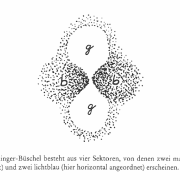 Elemente der Naturwissenschaft69,1998ELEMENTE DER NATURWISSENSCHAFT 69 2/1998 Das fünfte - das neue - Element David Auerbach und Ernst-August Müller Summary The development of the earth, going from the Saturn, the Sun and the Moon to our present state, has called forth the four elements, heat, gas, fluids and solids. In each of the first three states the germ of the... read more
Elemente der Naturwissenschaft69,1998ELEMENTE DER NATURWISSENSCHAFT 69 2/1998 Das fünfte - das neue - Element David Auerbach und Ernst-August Müller Summary The development of the earth, going from the Saturn, the Sun and the Moon to our present state, has called forth the four elements, heat, gas, fluids and solids. In each of the first three states the germ of the... read more -
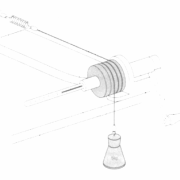 Elemente der Naturwissenschaft69,1998ELEMENTE DER NATURWISSENSCHAFT 69 2/1998 Zur Phänomenologie der Wärme Friedr. Wilhelm Dustmann Summary With reference to Martin Basfeld’s book «Wärme: Urmaterie und Ich—Leib», this article seeks critically to examine concepts of heat theory, including early suggestions by Goethean scientists (E. Hegelmann, G. Unger), and to rethink... read more
Elemente der Naturwissenschaft69,1998ELEMENTE DER NATURWISSENSCHAFT 69 2/1998 Zur Phänomenologie der Wärme Friedr. Wilhelm Dustmann Summary With reference to Martin Basfeld’s book «Wärme: Urmaterie und Ich—Leib», this article seeks critically to examine concepts of heat theory, including early suggestions by Goethean scientists (E. Hegelmann, G. Unger), and to rethink... read more -
Elemente der Naturwissenschaft66,1997ELEMENTE DER NATURWISSENSCHAFT 66 1/1997 Biomedizin - Forschung zwischen Naturwissenschaft und Geisteswissenschaft Widerspruch oder Ergänzung? Werner Hartinger Summary According to current understanding, the aim of natural science is defined as follows: Research into nature on the basis of space and time, logic and causality, analysis... read more